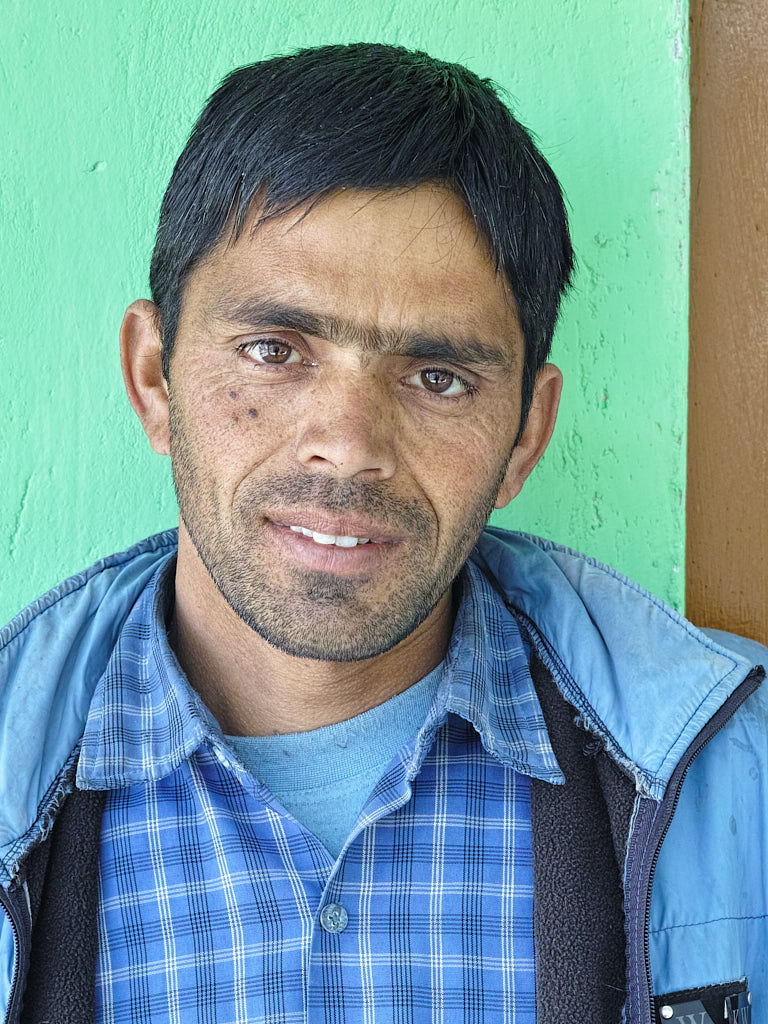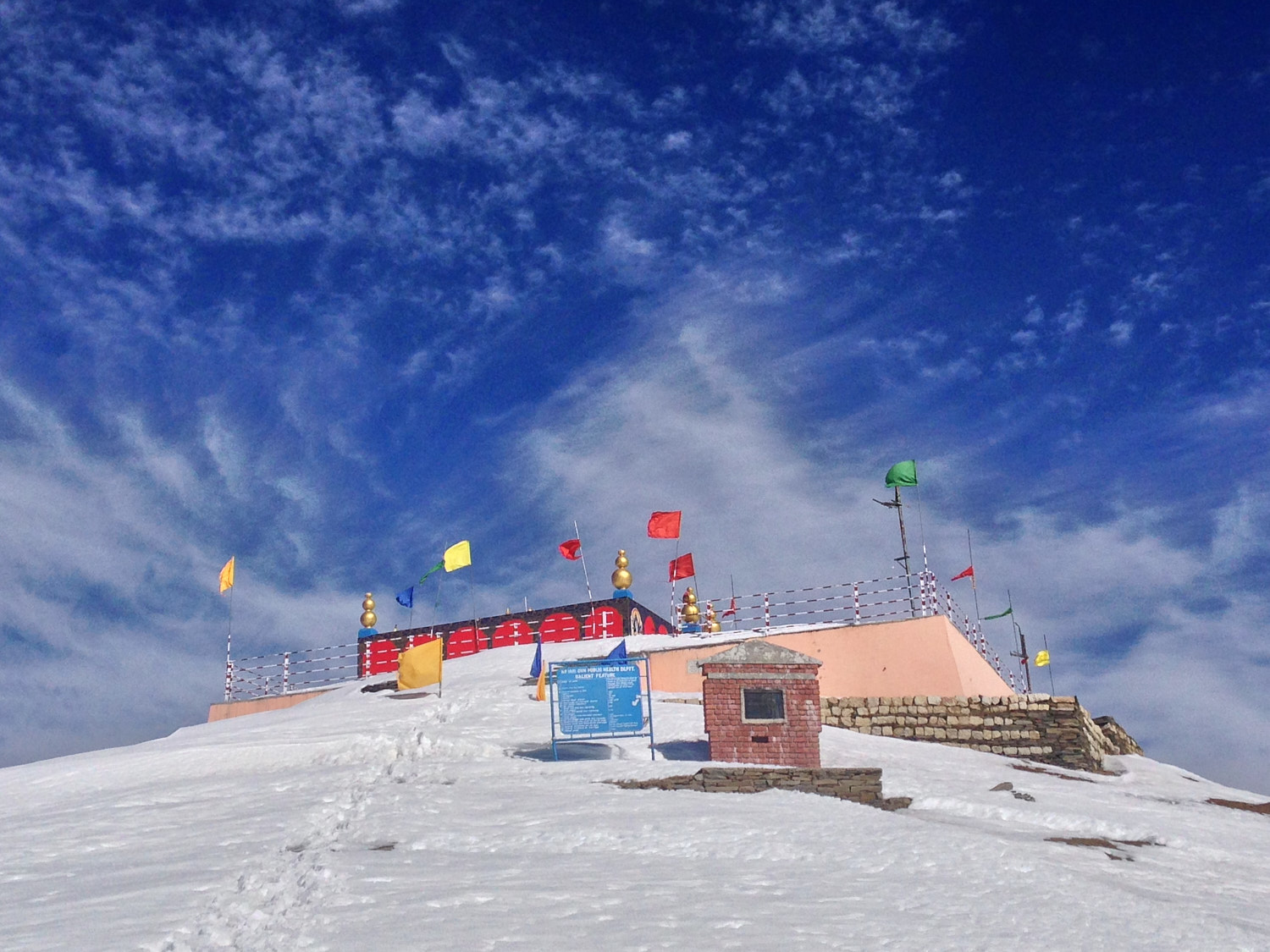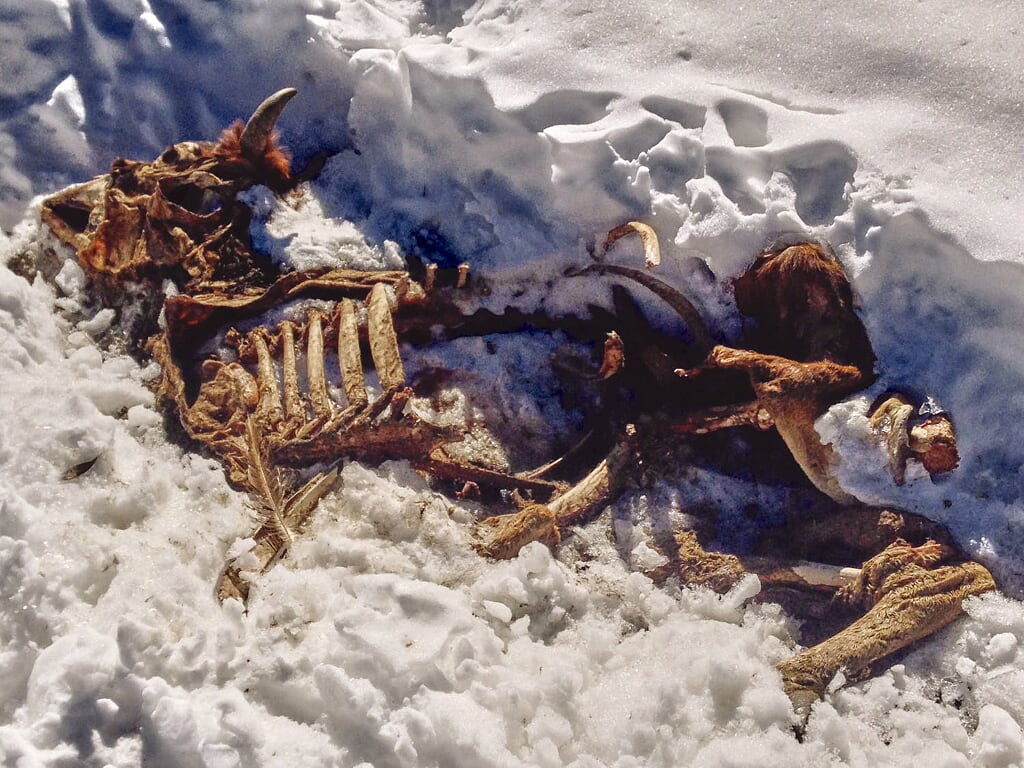Landour to Kolti village (Uttarakhand) trek

It’s nice to do those treks where you have panoramic views over huge Himalayan massifs, snow-covered peaks and massive glaciers. Nevertheless, with these small trails, you’re looking at the details, the flora, the fauna…
Table Of Contents
It’s not the immensity of the landscape that impresses you but the detail
The Northern slopes of Landour are blessed with immense biodiversity and hundreds of Buransh ( rhododendron ) trees. If you’re lucky like I am to walk this trail during the blooming season, i.e. March and April, you will be walking on a red carpet made of buransh petals.
 |
|---|
| A pathway carpeted with Buransh, how irresistible |
It’s not the immensity of the landscape that impresses you but the detail
This is a child-friendly trail and there are no drops or tricky sections. Yet, the trail is relentless and steep with an average grade of 17.9% and this will test your legs if you’re not used to walking.
The trail passes through an abandoned graveyard which is the perfect setting for some horror stories later in the day. It also winds through a dargah and passes through a small yet pristine and beautiful waterfall. Along this route there are many conifers and broadleaf trees, pine cones waiting to be picked, flowers to gaze at and bird calls to listen to. Moreover, if you are staying in Mussoorie, this trail is a complete antithesis to the hustle and bustle of a jam-packed hill station. As long as you like conversing with nature, there’s enough to keep you occupied on this trail.
Trek Diary
I met Satya Singh as I was photographing an old cowshed door and he invited me in for a cup of tea. After the usual inquisitive phase, where I often get asked why would I want to walk to this nondescript place, we settled in for a longer talk.
 |
|---|
| Satya Singh at Kolti village, a thinker and doer |
Satya Singh is the night watchman at one of the three water pumps that fall along our trekking trail. Water to Landour is piped from this mountain stream and lifted to Lal Tibba by three ancient water pumps that are manned in two shifts.
“Kolti,” he tells me “is a small village that is divided into two parts by a mountain stream.” Some people have houses on both sides and in winter they move to the village that is closer to Mussoorie. Yet for most people, life is still a daily struggle of having to walk 4 kilometres to Landour or 7 kilometres to Mussoorie. “It’s an everyday struggle for schoolchildren,” he says. Most of us cannot afford a room in Mussoorie, which would cost an additional Rs.5000 ($100) a month plus school fees. Therefore children have to walk for an average five hours every day to get to school and back. Since the village has no medical facility, “It is also a problem if one is sick or during childbirth, they have to be carried on a ladder by 6 people”.
 |
|---|
| Kolti village - Nothing much to see here but the journey is the destination as they say - The trail is enchanting |
It’s heartening to know that despite his poor education, Satya Singh has no gender bias. “I have two daughters and a son,” he says, “my eldest daughter is the brightest and I will make sure she goes to the best English school I can afford.” In today’s age, he reckons daughters have a greater love for their parents and he has no qualms about his daughters getting a better education than his son.
Trek Detail
The trail to Kolti starts from the Christian Cemetery on the Lal Tibba “chukkar”. Right opposite the Christian Cemetery trail is a broad mule path that heads downhill towards an abandoned cemetery. Skirt the cemetery wall and continue down the broad trail. The trail is loose shale and rocks and can be slippery if you’re not used to mountain paths. Although there are no bifurcations on this trail, you can be sure you’re on the right trail if you cross a large water pipe about 400 metres from the starting point. From there on, the water pipe weaves in and out of the trail all the way to the mountain stream and water pump house no 3, which marks the lowest point on the trail.
 |
|---|
| Follow this water pipe all the way to Kolti Village |
Another 100 metres down the trail you come to water pump house no 1 to your right. Skirt the pump house and follow the existing trail. At this point, the coniferous tree gives way to broadleaf trees and a host of Buransh trees. If you’re in the bloom season, from hereon you’re walking on a red carpet of fallen Buransh flowers. At this point, the trail turns muddy and descending is much easier and less slippery.
 |
|---|
| Baba Mir Ali Shah Dargah on the trail |
Just over a kilometre downhill, there’s a Dargah dedicated to Baba Mir Ali Shah. This is a nice place to rest and beyond the headstone, you can peek through to Nag Tibba. Another half kilometre of zigzagging descent brings you to Water Pump House No 2.
In March 2017 there were some high tension electricity cables fallen across the trail, which was a major cause of concern for me as I did not know if it was a recent breakdown and whether these cables were still electrified. However, at Kolti I was told that these fallen cables have been lying for a year now and they were not electrified. Nevertheless, I would still recommend giving them a wide berth.
The forest thickens after the second water pump house and if you’re lucky you can spot a bit of wildlife in this area. I saw a porcupine and a yellow-throated marten as I was descending down to the next landmark water pump house no 3 (700 metres below). This third water pump house is built over a mountain stream and there’s a beautiful and small waterfall to your right (see GPS logs). From the starting point to this waterfall there is no water along the trail. So make sure you fill up your bottles here, especially on your ascent and way back.
 |
|---|
| Cross the stream over a concrete bridge and the trail gently climbs through some terraced fields on to Kolti village. |
Trek Summary
- Type - Day Trek. Easy.
- Difficulty - Swiss Alpine Club (SAC) Scale - T1.
- Trek Duration - One and a half-hour descent and two hours ascent. A total of 3.5 hours.
- Trek Distance - 3.7 kilometers one way.
- Maximum Elevation - 2224 metres.
- Average Grade - 17.9%.
- Start and Finish - Christian Cemetary at Lal Tibba near Kellogg Memorial Church, Landour (Mussoorie, Uttarakhand).
- Getting There - You can drive to Christian Cemetery and start walking from there. However, we recommend parking at Char Dukan (there is a car parking there) and enjoying a meal there. Then a small walk along the Lal Tibba chukkar will get you to Christian Cemetery. You can easily find taxis from Mussoorie that will drop you to Lal Tibba or you can rent a motorcycle in Mussoorie or Landour. If like me, you prefer to walk, it’s a nice uphill walk from the mall to Lal Tibba with a small break at Char Dukan for chai and bun-omelette.
- Weather - March and April is the best time to complete this day trek. This coincides with the Buransh bloom season. We would not recommend this trail during the monsoons with young children as Landour receives a lot of rain, which turns the trail into a slippery affair.
- Mobile Connectivity - Mobile connectivity and data and is spotty around Kolti village on major networks, however, it gets better as you approach water pump number 2.
Essential Gear
- A cap/hat for sunny days.
- A litre water bottle which you can refill at the stream near water pump number 3.
- Trekking poles will make your ascent easier.
GPS Map, Waypoints & Log
- View/Download the trekking route on Wikiloc.
- Download GPX file and waypoints.




